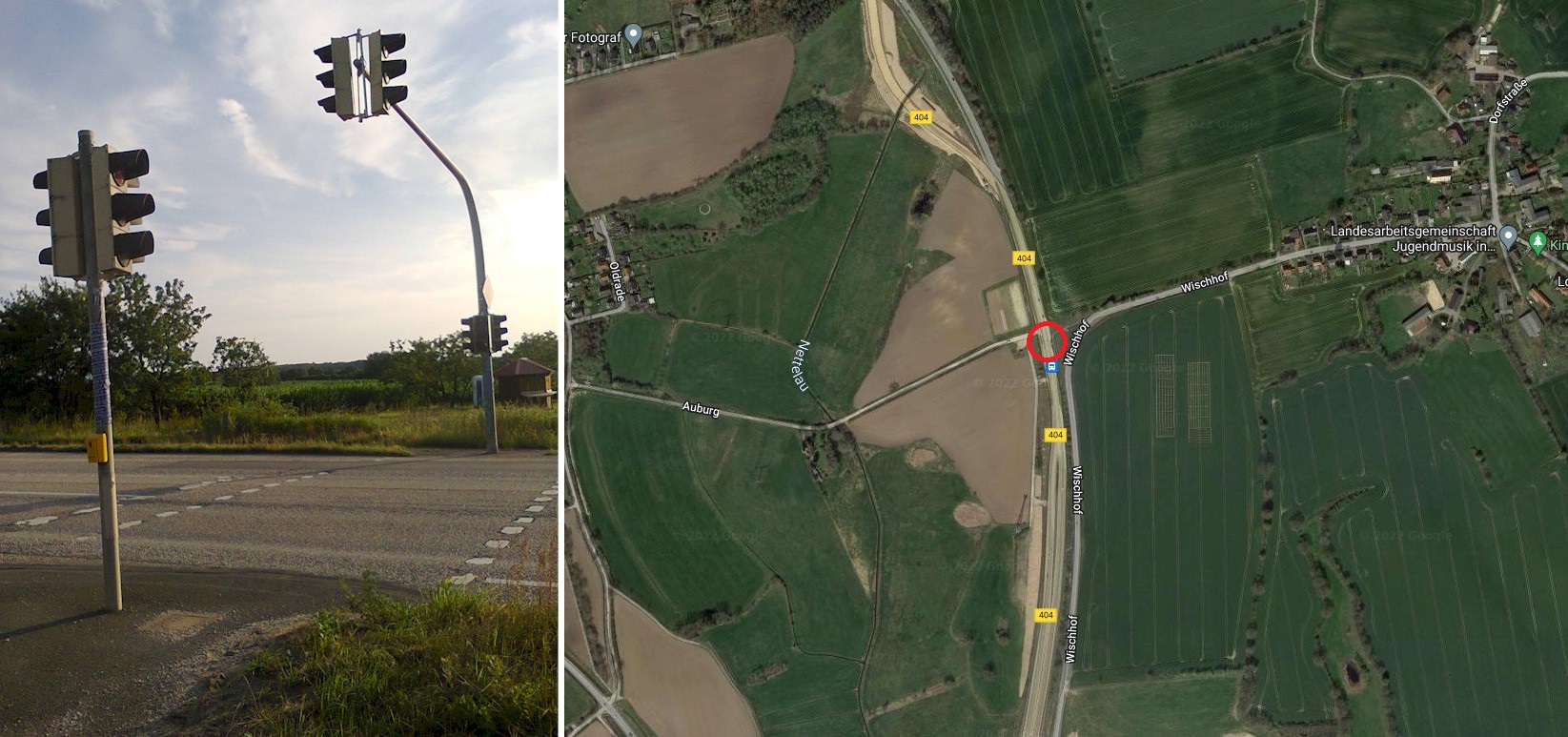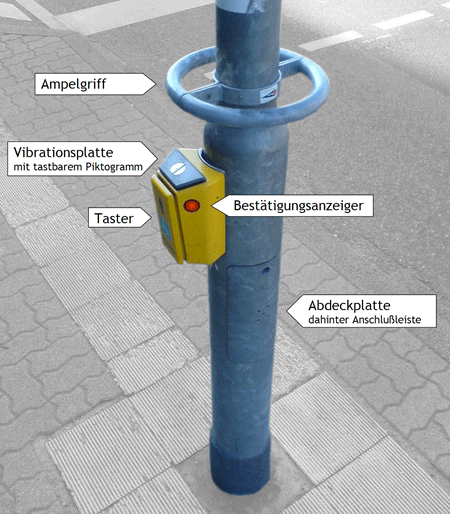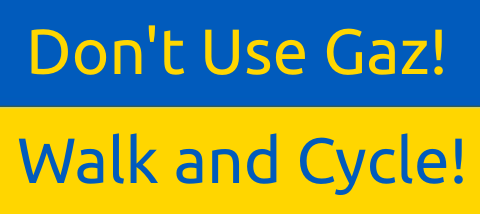
Living Streets has recently started a campaign against the long delays for active travellers at controlled crossings; please do take a moment to contribute.
The Grim Wait
When you're standing by the road waiting for a controlled crossing to give you a green light so you can cross, it isn't your imagination that it takes an eternity to change, and then does so just as there's a gap in the motor traffic that would have allowed you to cross anyway.
The original, ubiquitous controlled crossing in the UK was the PELICON (pedestrian light controlled) crossing, now known as the pelican crossing. It's been superseded to a degree by the puffin crossing, which derives from pedestrian user-friendly intelligent, though some councils, such as Birmingham, don't always fit the newer combined low-level signal and beg button box because it has ergonomic design issues (the red/green signal can't be seen if people are standing in front of it, whilst close by it is too low to be conveniently visible). Toucan crossings are simply a variant of the puffin crossing that permits cycling. Anyone who regularly uses these crossings will know they are very far from "user-friendly intelligent" for people crossing the road, since they often leave you waiting for a small eternity, whilst private car drivers are prioritised.
It wasn't always like this (and similar crossings in other countries are not hostile to active travel). The PELICON crossing responded immediately to the button press, and only inserted a delay if the next button press came too soon after the lights had just been through their cycle (too soon for those trying to prioritise motor traffic, that is). But it was felt that the delay to motor traffic caused by those pesky pedestrians trying to cross the road could be further reduced, and this is why the puffin family of crossings was developed.
The delay is interposed between pressing the button and changing the motor traffic aspect to amber, but only if the crossing was last used less than thirty seconds ago. The idea is that it will provide time for several active travellers to gather at the crossing so they all cross together, thus minimising the delay to precious motor traffic. In both busy and quiet locations this should work as intended, but between these two limits what will happen is that each person using the crossing will end up having their journey delayed before crossing alone (with no benefit to drivers). They may not be aware that the crossing was recently in use, as the previous user may no longer be visible from the crossing, especially if they gave up the wait and crossed on red. That happens quite frequently, as Living Streets have discovered in their own research, and as demonstrated in my video below. Of course this means that motor traffic is then brought to a halt shortly after, and for nobody at all. But rather than give up on a bad idea, to get around the issue of people giving up the wait, a sensor can be added to the system to detect if someone is still waiting. Sometimes these don't work (perhaps because the person waiting has neglected to take the opportunity to do some PT), so the crossing never changes, and sometimes the movement of a person taking advantage of a gap in the traffic fools the system into thinking someone is still waiting, causing it to bring the motor traffic to an unnecessary halt immediately after they have crossed (you can learn a lot by watching the red LED on the sensor). It's a system that creates an annoying experience for all users of the crossing, but especially for active travellers, who feel like they have to wait at every crossing.
Sensors have also been added to the carriageway aspects. These are used to detect the speed of the traffic on the carriageway, and if it is considered too fast then the crossing won't change. It can also increase the amber time by up to three seconds. Whilst this is intended to improve pedestrian safety, it also rewards (and therefore encourages) aggressive driving and speeding. Anecdotally these sensors are set far too pessimistically, meaning that almost any motor traffic will prevent the lights changing in favour of active travel. Indeed the day after I sent in my response to the Living Streets campaign, one of the crossings I mentioned in my response kept four people waiting for a very long time whilst motor traffic passed at well within the speed limit, and then changed the instant the motor traffic cleared.
To multiply up the misery, despite DfT guidance many crossings are made multi-stage, creating massive delays for active travel. These are typically built offset from one and other, requiring trick cycling around pedestrians in the case of toucan crossings. The multiple stops and starts sap energy. Good active travel infrastructure is designed to keep people moving at a steady pace. In the Netherlands the cycle crossing will be adjacent to the pedestrian crossing, timed to take advantage of the greater speed of a cycle, with only the pedestrian crossing made multi-stage if needed. That is rare in the UK, but you need only go as far as Selly Oak to see such a crossing, as one has been built on Harborne Lane as part of the junction remodelling. Of course being right at the junction active travellers will be delayed by the traffic lights doggedly working through their phasing, but there is a version for use away from junctions, called a sparrow crossing. Being new it'll be a while before we find out if they insert lengthy delays to avoid holding up King Car.
Living Streets is calling for a maximum delay of thirty seconds, but this rapidly multiplies up on multi-stage crossings. Thirty seconds is a long time by continental European standards. Take a look at this video I shot in the Netherlands. Note how quickly the crossing changes, even though it was very recently used by someone else:
The man towing a trailer with his bike apparently found even this short delay irritating, as he pressed the beg button multiple times. Some Dutch crossings aim to largely eliminate that delay, by idling in favour of active travel. Another option for cycle crossings is to add a sensor to detect the approaching bike. There is such a crossing on the A38 blue route outside the ballet school, but it's slow to respond, and sometimes it doesn't work at all (and unfortunately there's no backup beg button).
The multiple failings of toucan crossings can be seen in the video below of the toucan crossing that takes NCN5 across Cartland Road in Stirchley. Over and over again it demonstrates that it is slow and inefficient for all users, and encourages risky behaviour by everyone:
Regarding junctions, you may not be aware that some seemingly standalone crossings are linked to a nearby junction so that King Car isn't delayed as he races away from the junction. This creates toucan crossings that are even slower than a standalone crossing. One such example is the crossing between Frederick Road and Langleys Road in Selly Oak, a crossing that is actually very important for active travel. Why can't British traffic lights at junctions be made more responsive by intelligently adding an active travel phase as soon as possible after the beg button is pressed, just like at this Dutch junction, rather than grinding through a fixed phase cycle? Often the only function of the beg button is to light up the WAIT indicator. Of course if nobody is waiting to cross, it's equally possible to drop the active travel phase. The technology exists, we just don't use it.
Less Obvious Issues
 In Germany, to create a toucan crossing the pedestrian lens is replaced with one that also shows a bicycle, as shown in the photo on the right. Alas in the UK we make heavy weather out of the upgrade. This requires a green bicycle aspect to be added next to the green man, even if they operate together. Also two sets of traffic lights are needed for drivers in both directions, because the crossing has to be widened. All this multiplies up for multi-stage crossings. It's pointless, very expensive over-engineering. Push Bikes have been told by council engineers that the cost of changing of a controlled pedestrian crossing to a toucan crossing is considerable, so much so that in Birmingham we often just get instead a CYCLISTS DISMOUNT sign at an existing puffin crossing. It's a moot point that most people will just cycle across as if it was a toucan crossing, with nobody coming to any harm.
In Germany, to create a toucan crossing the pedestrian lens is replaced with one that also shows a bicycle, as shown in the photo on the right. Alas in the UK we make heavy weather out of the upgrade. This requires a green bicycle aspect to be added next to the green man, even if they operate together. Also two sets of traffic lights are needed for drivers in both directions, because the crossing has to be widened. All this multiplies up for multi-stage crossings. It's pointless, very expensive over-engineering. Push Bikes have been told by council engineers that the cost of changing of a controlled pedestrian crossing to a toucan crossing is considerable, so much so that in Birmingham we often just get instead a CYCLISTS DISMOUNT sign at an existing puffin crossing. It's a moot point that most people will just cycle across as if it was a toucan crossing, with nobody coming to any harm.
The small, recessed button is very difficult to operate if wearing thick gloves, so I can imagine it also causes problems for people who don't have fingers or who have other dexterity-related problems. Although such buttons can be found on very old equipment on the continent, more modern beg button boxes have a large plate operated switch, or are entirely touch-sensitive.
A couple of other less obvious features have been bolted on to the beg button boxes. A very small number have modern touch switches, but these are cunningly disguised as traditional switches because NOTHING MUST CHANGE. I found this out the hard way giving a button the usual force required to operate a traditional switch, only to painfully stub my thumb against something rigid. Also, unseen by most people, some push button boxes have a small cone on the underside that rotates when it is safe to cross, intended for people who cannot see the pedestrian aspects. These necessitate groping under the box, where you'll also find finger-unfriendly bolt heads, structural ribs, and used chewing gum. These cones are retrofitted by a third party, not factory-fitted, creating a significant on-cost. The same is achieved in continental European countries by building into the design a vibrator, like in your mobile phone.
Why Does This Need to Change?
Private cars have the advantage of being fast, climate-controlled, and comfortable, but this comes at a huge cost. That is now well documented, and it is very clear that private car use has to be strongly discouraged. Changing the timing of crossings is one way to tilt the balance in favour of active travel, so that cycling and walking short journeys is quicker than driving, and not rendered unpleasant by the need to wait at the side of the road in the cold, wind, and rain breathing noxious gasses from car exhausts. There are signs that things could be done better in the UK, with some crossings in Birmingham being remarkably sprightly, but they are few and far between, and unbearably slow multi-stage toucan crossings are still being installed at the time of writing. All new crossings should be parallel crossings that take advantage of the fact that people on bikes are much faster than pedstrians. This can be done right now, without any changes to the regulations.
Secondly, we need to make junctions more intelligent, so that they can insert active travel phases as and when they are needed.
Finally, we need to move off the junk track that has resulted in the over-engineered, expensive, and obstructive toucan crossing. Why not take a leaf out of the simpler continental design that requires less hardware and does a better job? Why not switch to using the continental style of beg button box, which is a more modern, better thought-out design that being more widely used should also help to bring down the cost?
Controlled Crossing in a Remote Part of Germany

Old Style German Demand Button

Side-By-Side Controlled Crossing in Selly Oak
Long Delays at a Toucan Crossing near Selly Oak Triangle



